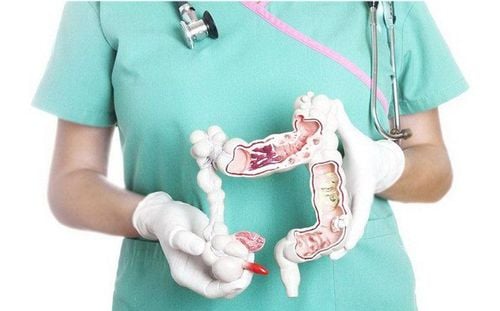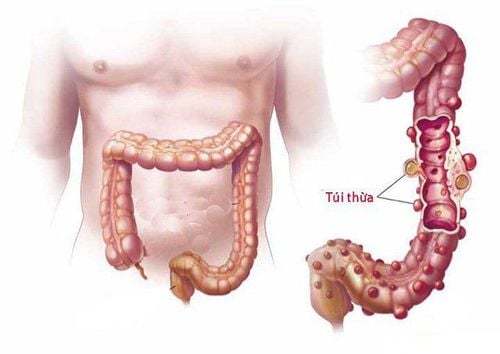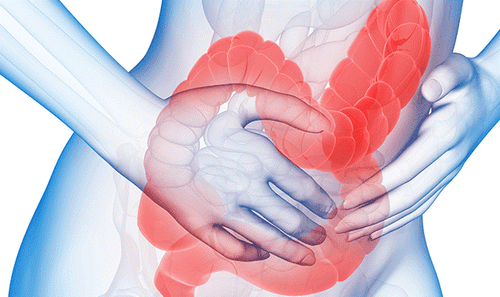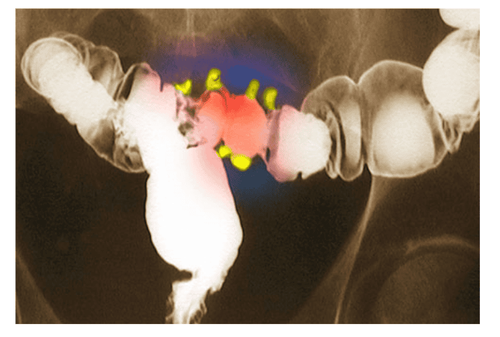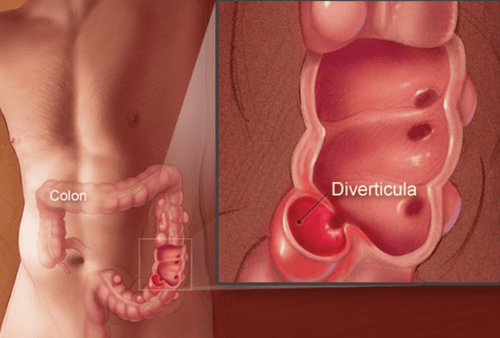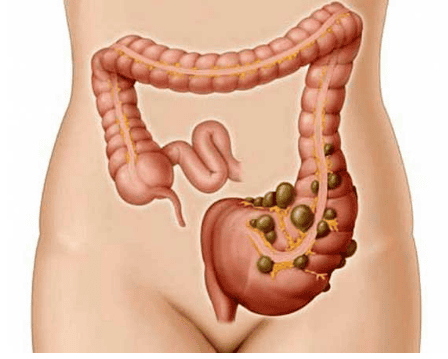This is an automatically translated article.
The article was written by Doctor Mai Vien Phuong - Department of Medical Examination & Internal Medicine - Vinmec Central Park International General HospitalColonic diverticula is a common disease in the elderly, often without symptoms, unless these diverticula become inflamed, also known as diverticulitis. In this article, we will discuss the difficulties in diagnosing this pathology.
1. How is diverticulitis diagnosed?
If you are experiencing symptoms of diverticulitis, it is important to see a doctor.
Your doctor will ask questions about your medical history (such as bowel habits, symptoms, diet, and current medications) and perform a physical exam, which may include a rectal exam and endoscopy. colonoscopy.
One or more diagnostic tests may be performed. Tests typically include blood tests to check for signs of infection, stool tests to check for the presence of blood in the stool or the presence of infection, and a CT scan or MRI of the abdomen.
In people with rapid, heavy rectal bleeding, a doctor may perform a procedure called an angiogram to determine the source of the bleeding.
2. Differential diagnosis of diverticulitis from other diseases
Because abdominal pain can be a sign of many different conditions, your doctor will have to differentiate it from other causes of your pain such as:
Appendicitis
Pelvic inflammatory disease
irritable bowel syndrome
Stomach ulcer
Ectopic pregnancy
Colorectal cancer
Ovarian cancer
Ischemic colitis
Inflammatory bowel disease
Colonic diverticulum may be confused with many other diseases of the gastrointestinal tract with similar symptoms. Therefore, it is necessary to detect colonic diverticulitis early by screening tests or by diagnostic tests in the acute inflammatory phase so that the treatment can be more effective.
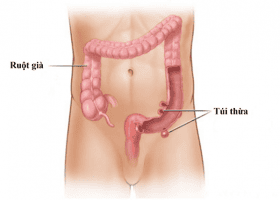
3. Difficulties in diagnosing diverticulitis
According to the data of some foreign authors, the rate of correct diagnosis before surgery is only 26.8%. In which, the correct diagnosis of left rectal diverticulum is 60% while right rectal diverticulum is correctly diagnosed only 22.2%. According to the assessment, there are two reasons for the low correct preoperative diagnosis.
First, UTI is still considered a rare disease, so the patient is thought of with a more common diagnosis than diverticulitis. Second, like other Asian countries, colonic diverticulitis in some studies, focused only on the right colon, makes it easy to misdiagnose with acute appendicitis (VRT).
It is worth noting that many patients with diverticulitis have to be operated on with the preoperative diagnosis of acute appendicitis. According to some studies, this rate is 77.8%. This is explained because the clinical presentation of right colonic diverticulitis is very similar to that of acute appendicitis. Therefore, the differential diagnosis of these two diseases based on clinical alone is very difficult. This data in some studies by authors Leung, Markham, Yang is, 93.2%, 97.2% and 91%. The reason for the high rate of these studies may be that imaging has not been widely applied and knowledge about diverticulitis is still limited.
Recent studies show that the misdiagnosis rate is still high but has significantly improved, the rate of misdiagnosed acute appendicitis in patients with right colonic diverticulitis by Hilderbrand, Tan, Matsushima times are 31%, 25% and 9.1% respectively.
Another reason for the high misdiagnosis rate is that the indications for surgery for acute appendicitis in some medical facilities are mainly based on clinical and ultrasound images, with little use of imaging diagnostic tools. high-precision images such as CT.
Reducing the misdiagnosis rate is significant because the majority of diverticulitis in this misdiagnosed group is only mild and can be treated conservatively with an 80-90% success rate.
In order to reduce this incidence, some authors such as Leung and Markham have given suggestions to help differentiate colonic diverticulitis from acute appendicitis such as colonic diverticulitis with longer duration of pain while Symptoms of infection are less intense, less vomiting, less white blood cells.
However, to date, the above comparisons have not had highly reliable evidence. Author Lee also developed a scoreboard to improve the clinical diagnosis of right UTI with a sensitivity of 85%.
The experience of the author Matsushima (misdiagnosis rate of 9.1%) is to perform a thorough ultrasound to increase the sensitivity of the ultrasound and perform CT when in doubt. If according to the research of some authors, ultrasound is widely applied but the sensitivity is still low, CT has higher sensitivity, but currently it cannot be widely applied because of its high cost and misdiagnosis rate. is expected to continue to increase as the frequency of the disease increases.
Regarding preoperative diagnosis in left colonic diverticulitis group in the study of some authors, 40% of patients were diagnosed as colon tumor. Colon tumor is a common differential diagnosis in patients with left colonic diverticulitis. In these two patients, both CT and ultrasonography showed colonic wall thickening. In Western countries, where left colonic diverticulitis is common, misdiagnosis with colonic tumor is the most common, although the incidence is not high. The use of other means such as colonoscopy, contrast-enhanced colonoscopy can reduce this rate.
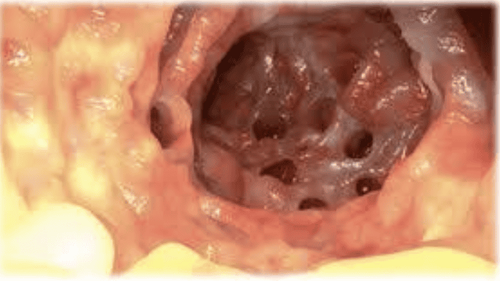
4. Differentiate between right colonic diverticulitis and appendicitis based on the following symptoms
4.1 Signs and symptoms of appendicitis Pain that starts suddenly in the lower right abdomen Pain that starts suddenly around the navel and often moves to the lower right abdomen Pain that gets worse as the person gets sick cough, walking Nausea and vomiting Loss of appetite Mild fever may get worse as the disease progresses Constipation or diarrhea Abdominal bloating Passing The location of your pain may vary, depending on your age and location of the appendix. During pregnancy, the pain comes from the upper abdomen because the appendix is pushed higher during pregnancy. 4.2 Signs and symptoms of diverticulitis Pain, which may be continuous and persist for several days. The lower left side of the abdomen is a common site of pain. However, sometimes, the right side of the abdomen also hurts, especially in people of Asian descent Nausea and vomiting Fever Abdominal tenderness Constipation or diarrhea but less commonly
Please dial HOTLINE for more information or register for an appointment HERE. Download MyVinmec app to make appointments faster and to manage your bookings easily.
References:
Le Huy Luu, Nguyen Van Hai (2010), "Results of right colonic diverticulum surgery by laparoscopic surgery", Medicine of Ho Chi Minh City, volume 14 (additional to no. 4), p.12-15. Ly Minh Tung, Nguyen Van Hai (2011), Clinical features, images, and surgical results for diverticulitis. Aldoori W.H., Giovannucci E.L., Rockett H.R., et al. (1998), "A prospective study of dietary fiber types and symptomatic diverticular disease in men", J Nutr, Vol.128 (4), p.714-719. Ambrosetti P., Robert J.H., Witzig J.A., et al. (1994), "Acute left colonic diverticulitis: a prospective analysis of 226 consecutive cases", Surgery, Vol.115 (5), p.546-550.





